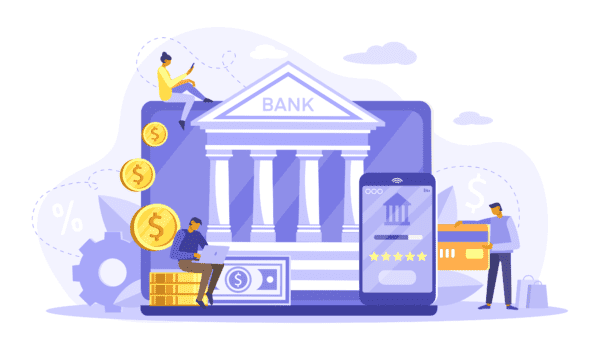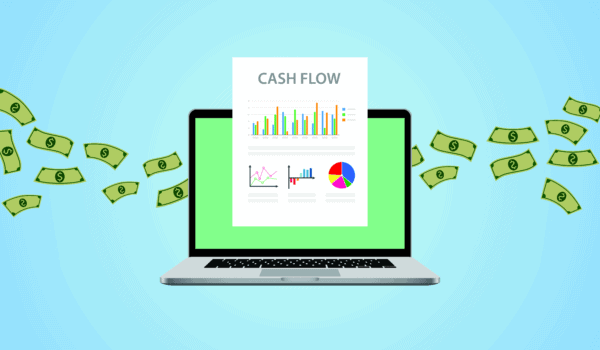Businesses are adopting blockchain all over the world with 91% of banks having invested in blockchain solutions by 2018. Let's find out what are the benefits of this widely accepted technology, its use-cases, and how it works.
Definition of blockchain is given by IBM as: “a shared, immutable ledger that facilitates the process of recording transactions and tracking assets in a business network.” Essentially any kind of assets from a house, car, cash, or land to intellectual property, patents, copyrights, and branding can be tracked and exchanged on a blockchain grid, where all parties of the transaction enjoy reduced risks and costs.
The survival and efficiency of any business depend on information. Not just the mere content of it, but also its quality and the way information is received are crucial for running a business. In other words, the faster information is obtained and the fewer errors there are, the better. Blockchain is believed to be the ideal technology for delivering that information since it enables instantaneously shared and wholly transparent data sharing on an unchangeable book accessible by only authorized members of the network. Therefore, banks, businesses, manufacturers, consumers, and other involved parties can confidently and efficiently track any transactions while having end-to-end transparency and reaping the numerous other benefits provided by blockchain technology. If you want to familiarize yourself with key elements of this tech, read on.
Key Components of a Blockchain

The essence and technique of financial bookkeeping haven’t changed much since an Italian monk Luca Pacioli officially codified the then-revolutionary double-entry accounting practice more than 500 years ago. This Method of the Merchants of Venice enabled trade across nations and expanded the global economy.
Today, the most radical alternative is blockchain technology facilitating the digital transformation of the economy. The most distinct element of this technology, which is at the heart of bitcoin and other cryptocurrencies, is that it is an open, distributed ledger technology (DLT). It means:
- immutable transaction recording where clearing and settlement phases are programmed. Hence, risks were reduced and data accuracy improved.
- networks operate on an end-to-end basis making the transaction execution highly error-proof.
- open verification of transactions by network participants rather than a central authority increases transparency.
- an irrevocable record of all transactions is created in the shared ledger. This makes it nearly impossible for any participant to tamper with the recorded transaction. Even if a transaction contains an error, a new one must be executed rather than deleting or changing the old one. This aspect further enables more effective auditing and monitoring by different supervisory and regulatory bodies.
Last but not least, it is possible to digitally program or store a set of rules — smart contracts — to help quicken the transactions. Examples include establishing conditions for corporate bond transactions, terms for insurance to be paid and so many other possibilities.
How Blockchain Works

As the name suggests, this technology records data for each transaction in ‘blocks’. These blocks or transactions are equivalent to the movement of different types of assets, for example, cash, car, copyright, or bond. Besides, the data type inside this block can range from personal identification data, location, time, the number of assets, or even qualitative aspects of assets such as temperature.
The next piece of a blockchain ‘puzzle’ is the ‘chain’. As the assets change ownership and move from hand to hand, the precise timing of this movement as well as its sequence is recorded in a distributed ledger. The programming of this chain of data blocks is such that it cannot be altered or another block being added afterward between two existing ones.
Blockchain and the Future of the Financial Market

According to the World Economic Forum (WEF), blockchain technology has attracted more than $1.4 billion. This financial technology (fintech) is often perceived as ‘the new Internet of Finance’ and mostly revolutionizing the financial sector.
Banking giants such as Goldman Sachs, J.P. Morgan, and others now have their special blockchain laboratories, new collaborations with blockchain platforms, and in-depth studies and publications on this revolutionary topic. Goldman Sachs even owns the copyright for the blockchain-enabled transaction settlement process. It’s not only banks but also huge national stock exchanges such as the Nasdaq Stock Market and the New York Stock Exchange investing in deep research on blockchain technology.
Blockchain is a response to the fast-changing nature of human relationships. You can find a use case for any application of this technology in any field. It is used to trace fresh seafood from the moment it’s caught, to improve financial services security for cryptocurrencies, transform healthcare outcomes by improving patients’ care through data efficiency and accuracy enhancements, and even enable innovations in a controversial oil and gas industry. It is hard to predict the future of finance in a world of blockchain.
Photo: Lerbank-bbk22/Shutterstock
You might also like:
Support us!
All your donations will be used to pay the magazine’s journalists and to support the ongoing costs of maintaining the site.
Share this post
Interested in co-operating with us?
We are open to co-operation from writers and businesses alike. You can reach us on our email at cooperations@youthtimemag.com/magazine@youthtimemag.com and we will get back to you as quick as we can.










